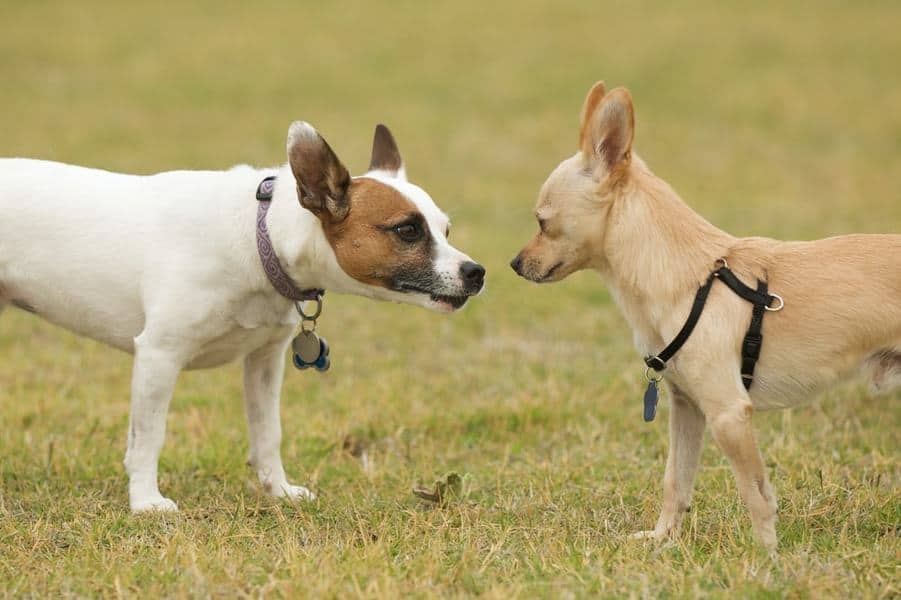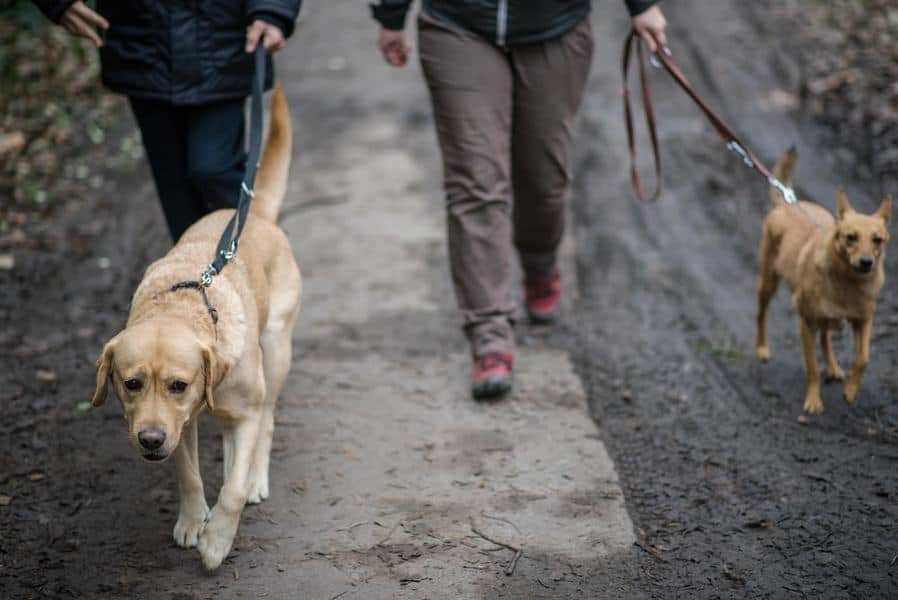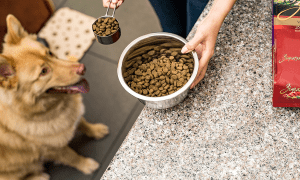“This post contains affiliate links, and I will be compensated if you make a purchase after clicking on my links.”
When adding another 4-legged member to the family, it’s important to introduce a new dog to your existing dog appropriately for harmonious cohabitation.

Well I am a HUGE proponent of adopting, so I want to start off by saying congratulations and thank YOU for choosing to adopt! Spring is here and the nice weather will be with us for several months, so this is the perfect time for anyone to adopt. I encourage you to visit your local animal shelter this weekend to either adopt or volunteer. The dogs will greatly benefit from you volunteering even just an hour to walk, play with them, and share much needed love and affection.
One of the best ways to create a harmonious multi-dog household is to choose the most appropriate pairing of dogs possible. The considerations I am providing below are just that, considerations. They are simply things to keep in mind and think about. Introducing two dogs is never without risk, as there are many variables that impact the interaction and outcome. If you are uncertain, I suggest you work with a qualified professional in your area who can help with the dog-to-dog introduction process.
It’s critical that owners choose a dog with the right energy level and behavior tendencies for their lifestyle. An active young couple who hikes and exercises daily, may do better with a high energy dog. Whereas an elderly more sedentary individual may not. A family with young children and very little free time who lives in a NYC apartment, probably should not get a high energy vocal breed like a German Shepherd or Husky.
Also consider that male and female combinations can be better than two dogs of the same sex (note: two male dogs tend to work better than two female dogs). If you currently have a puppy under nine months of age, I would hold off on adopting until your puppy is at least 9-12 months old. I would also make sure you are no longer having housebreaking or puppy biting/mouthing issues. If you are having challenges with your current dog, adding second dog will NOT fix them. It will only make them worse. Address your present dog’s issues with training first, then add a second dog into your household.
Take adequate time and thought to decide what dog is right for your lifestyle, energy level, and dog owning abilities. This decision will either set you and your dog up for success or failure.
Once this is decided, you can move onto the introductions.
Phase 1: Start with a walk on neutral territory with no sniffing or greeting of any kind. Two handlers (each with one dog), eventually moving the dogs closer together. Once dogs are walking side-by-side with two handlers, pass one dog/leash over into the hands of one handler.

Phase 3: Walk back to the home, take new dog to the back yard to explore on its own for a few minutes. Then both dogs on a loose leash for another intro in the back yard.
Phase 4: Take both dogs inside the home and meet on loose leash.
Critical elements for initial few weeks (or more): Always feed dogs separately in their own crates. Make sure there are no toys left around. Toys, bones, and chew items are only distributed to each dog when they are in their separate crates. Dogs should not be left alone together. Only supervised interactions for the first several weeks (or more). Remember, safety and long-term success if our #1 priority. That’s why it is better to take slow proactive steps to set up for success, than it is to have an incident and have to bounce back from that major step back.
If the introduction is done slow and progressively, there should be sufficient opportunity to evaluate the dynamics between the two dogs without conflict.
Please note: These are NOT “set in stone” rules, these are merely considerations for one type of approach. There are too many variables to ever make a one size fits all approach that would be free of potential risk. Everything is very situational and individually dependent on the dogs and humans’ abilities. That’s why these ARE considerations, NOT rules.
Once again, I commend you for choosing to adopt and save a life. If you are interested in a specific type of breed, look into adopting from a Breed Specific Rescue, rather than buying from a breeder or puppy mill pet store.
Putnam NY Dog Trainer Steve Reid, of S.R. Dog Training. Learn more at: www.srdogtraining.com and www.Facebook.com/SRDogTraining.






















Thanks a lot for very helpful tips. I am facing same problem with my dogs. Now they are understanding each other. Your tips are really useful. Thanks for sharing.